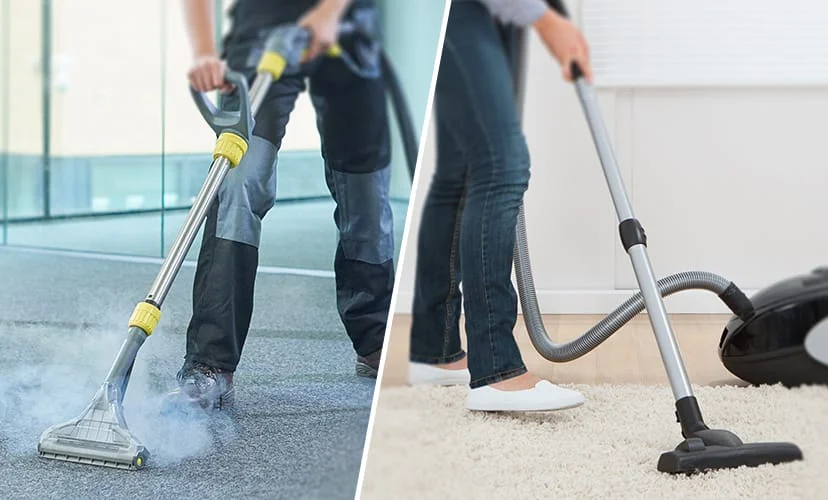Colorado Springs Roofing maintenance are one of the most important ways to ensure the long life and protection of your home. A well-maintained roof can prevent small problems from escalating into major ones.
A roof inspection should be conducted regularly by a qualified roofing professional to ensure that the shingles are secure and the flashing is watertight. Other regular maintenance can include trimming tree branches that hang over a house or could snap during a storm.
As a homeowner, you should regularly inspect your roof from the ground and from a ladder. This will allow you to see the condition of the shingles, flashing, and vent pipes. You should look for damage that is not too obvious, especially after a major storm.
For example, hail damage to shingles will often show up as pockmarks throughout the surface of your roof. And while it’s not as noticeable, wind damage may also be present. This could be in the form of blown debris, broken shingles, or damaged ridge caps located on the top of your roof.
You should always check your attic for signs of water infiltration after a storm, as well. If you find soft spots in the ceiling or mold, you’ll want to call a professional for an inspection. They’ll be able to determine whether the problem is related to the shingles, the underlayment, or the flashing.
The shingles are the first line of defense for your home, and they can be easily damaged. Loose shingles will provide easy access for rainwater to penetrate your roof and cause severe interior damage. If you notice shingles blistering or cracking, it’s time to replace them. Ideally, you should re-shingle the entire roof to ensure it is structurally sound.
You should also keep an eye out for moss, lichen, and algae growth on your roof. While they may not be as damaging as a leaking roof, these growths are unsightly and can contribute to rot. A moss-free roof will be more attractive and offer better protection against moisture penetration. Talk to your roofing contractor about preventative products you can use to keep these growths from forming on your roof. These can be applied on a regular basis and help you avoid expensive repair bills in the future.
Check your guts.
Your gutters protect your home by directing rainwater away from the house and its foundation, but a clogged or damaged gutter can leave you with expensive repair bills down the road. Gutter inspections can be difficult since most issues require a ladder and the risk of falling off the roof, but taking some time to walk around your home after a storm and check up on your gutters is worth it to avoid major damage down the road.
Check for debris stuck in the gutters, especially leaves and twigs. A clogged gutter can cause water to back up onto your roof, damaging the shingles, siding, and fascia boards. It may even result in the need for replacements. To avoid this, clean out your gutters regularly with a hose to ensure water flows easily and doesn’t pool up in the gutter.
If you live in an area with frequent strong winds, make sure your gutters are secure. During intense storms, strong winds can send wet leaves and debris flying in all directions. When these materials wind up in your gutters, they can block the flow of water, causing your gutters to sag or even fall down. If you notice any of these problems, be sure to have your gutters repaired or replaced as soon as possible.
The same applies for roof vents, which can also become blocked by debris. Inspect for cracked housings on plastic roof vents and broken seams on metal ones. You can seal these areas with caulk, but be sure to replace the vents once they’re damaged.
Look for loose shingles or any signs of shingle wear, such as curling, blistering, or fading. These can lead to water intrusion, wood rot, or insect infestation. Also inspect for step flashing along walls that intersect with the roof. These short sections of flashing channel water over the shingles and downhill from the roof to prevent water intrusion into the house. If the flashing rusts through, it must be replaced, and you may need to re-secure the hangers or spikes if they’ve become loose over time.
Check your flashing.
Flashing is a thin layer of metal that encloses and directs water away from the roof, and it is located everywhere a roof meets another structure like a chimney, dormer, or skylight. It prevents water from leaking into the walls and ceiling of the house by directing it back down the roof or into the gutters. Leaks caused by faulty flashing can cause serious problems in your home and lead to costly repairs.
It is important to check the flashing regularly to make sure that it is secure and watertight. The majority of leaks occur in the valley areas where two different slopes meet, but they can also appear around dormers and other projections from the roof. If you suspect that the flashing is damaged, it is crucial to get it repaired right away.
The most common signs of damage to flashing are rust spots and holes. These holes are typically the result of weathering, which happens as a result of constant exposure to sunlight and water. In addition, if you live in an area that experiences high winds, it is possible for the flashing to become bent or even detached from the roof.
You can check your flashing by walking on the roof with a bright flashlight and looking for any gaps or cracks in the seams. If you do find any cracks, it is important to contact a roofing professional as soon as possible because these cracks can let in water and other debris, leading to further damage to the roof and the rest of the structure.
A roof expert can examine the flashing to make sure that it is properly sealed and secured. In addition, they can replace the flashing if necessary to prevent leaks and other moisture-related problems in the future.
Many homeowners have tried to fix leaking flashing themselves, but it is essential to consider the safety of getting on the roof and making these types of repairs. It is also a good idea to speak with a local roofing contractor who can advise you on the best course of action for repairing your flashing.



 Many photographers specialize in a specific genre of photography. Some specialize in portrait photography, capturing images of people in a studio, while others focus on commercial photography and take pictures for advertisements and catalogs. Aerial photographers capture landscapes from aircraft and other means, while fine art photographers sell their photos as works of art. No matter the type of photography, many photographers are passionate about telling stories with their images. Listed below are some of the different types of photographers:
Many photographers specialize in a specific genre of photography. Some specialize in portrait photography, capturing images of people in a studio, while others focus on commercial photography and take pictures for advertisements and catalogs. Aerial photographers capture landscapes from aircraft and other means, while fine art photographers sell their photos as works of art. No matter the type of photography, many photographers are passionate about telling stories with their images. Listed below are some of the different types of photographers: